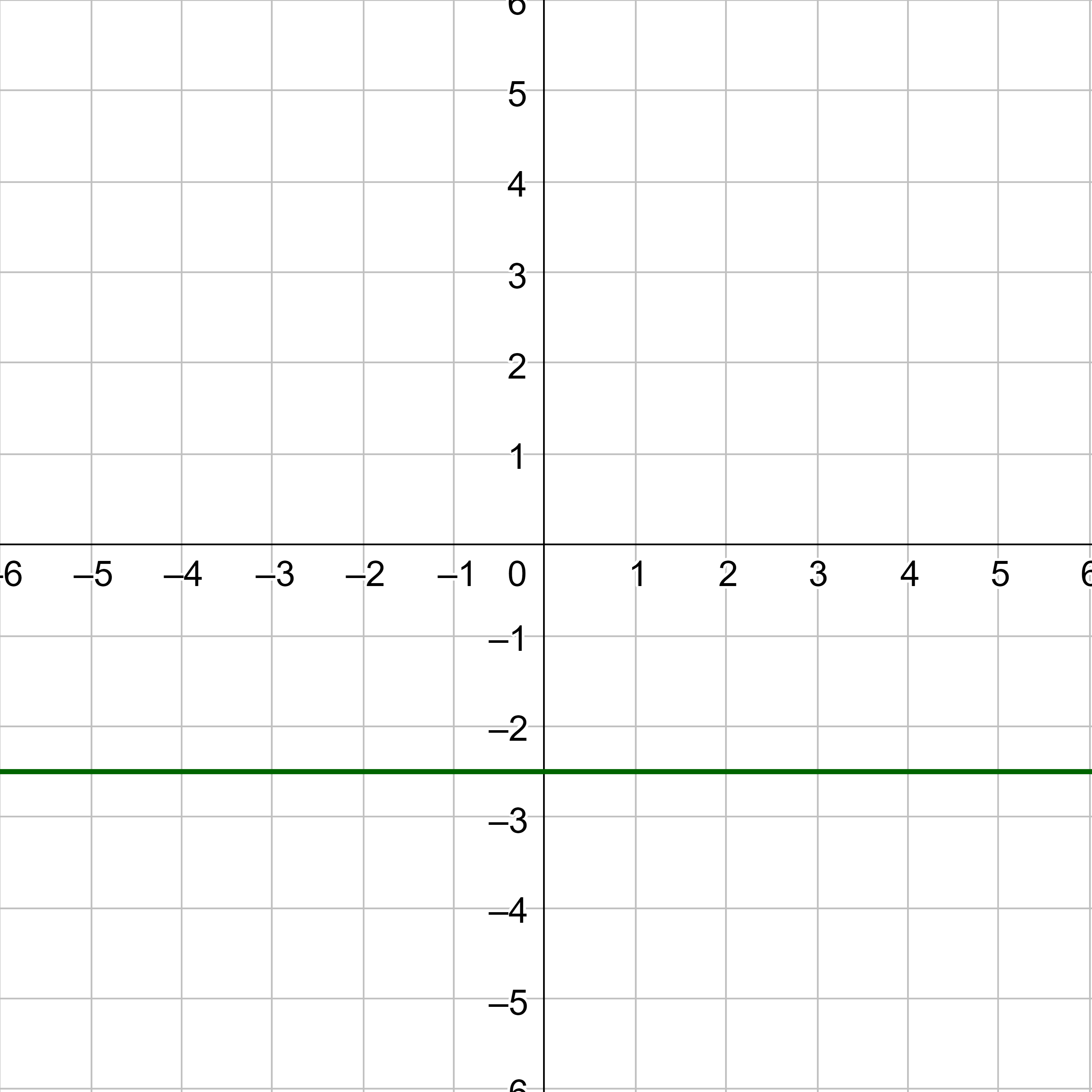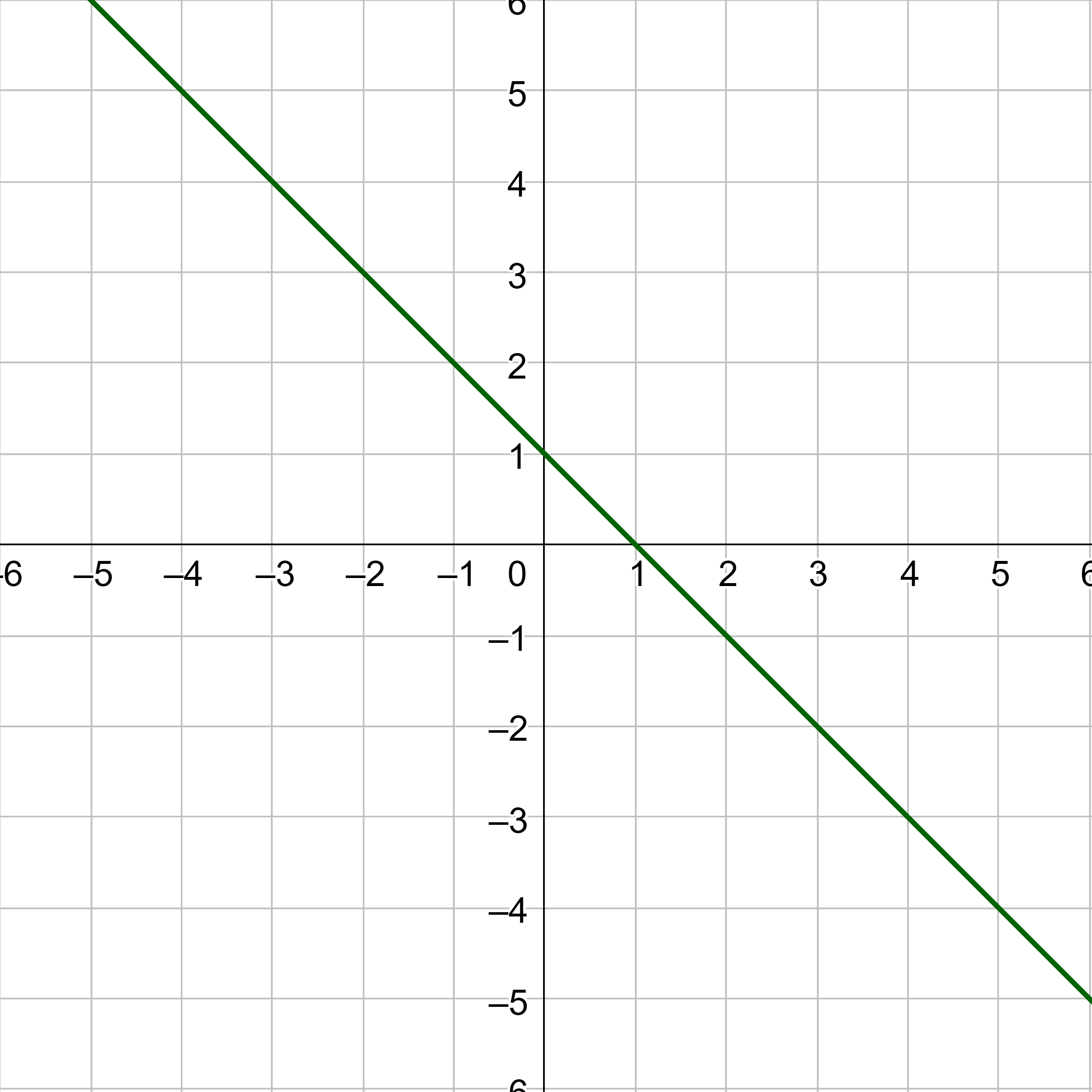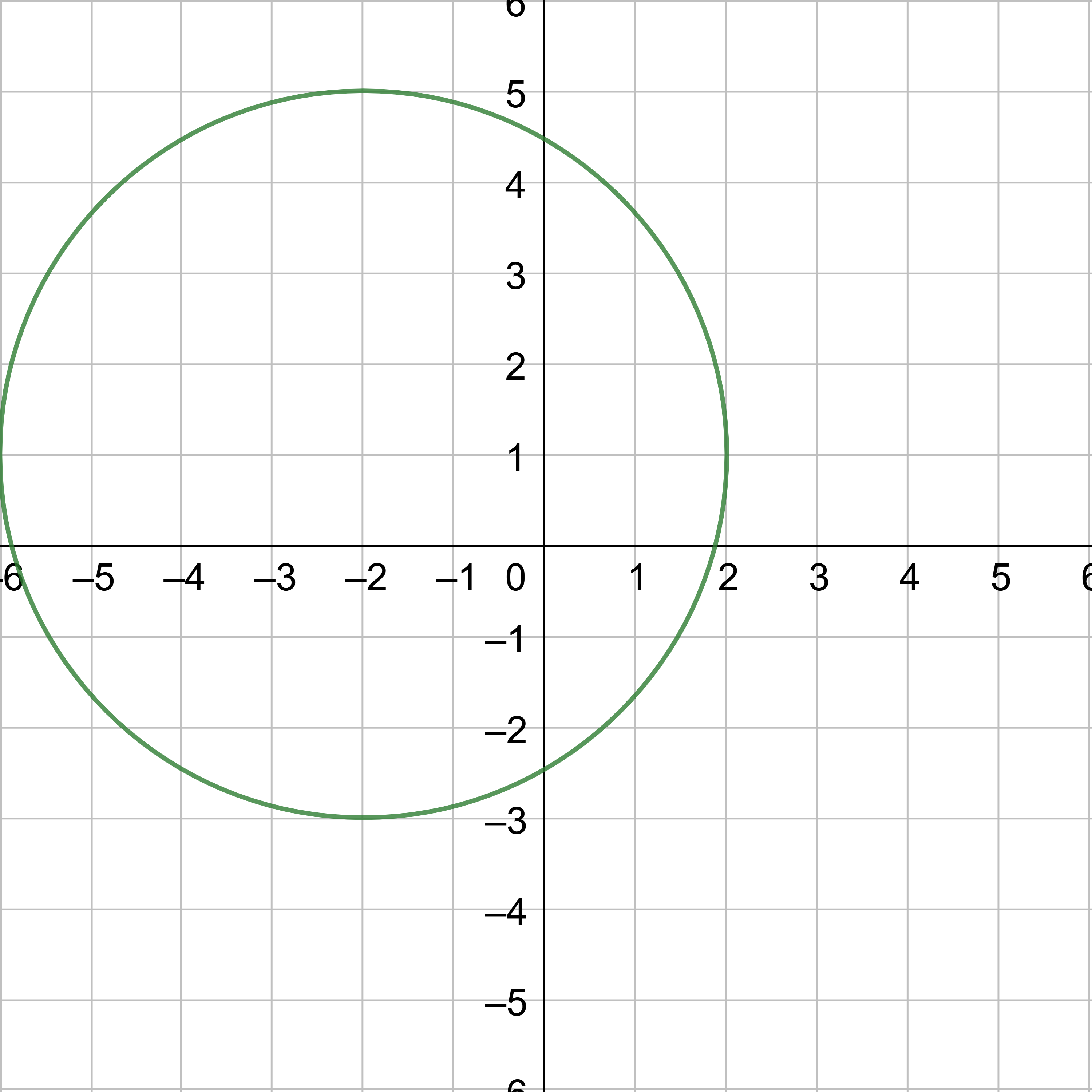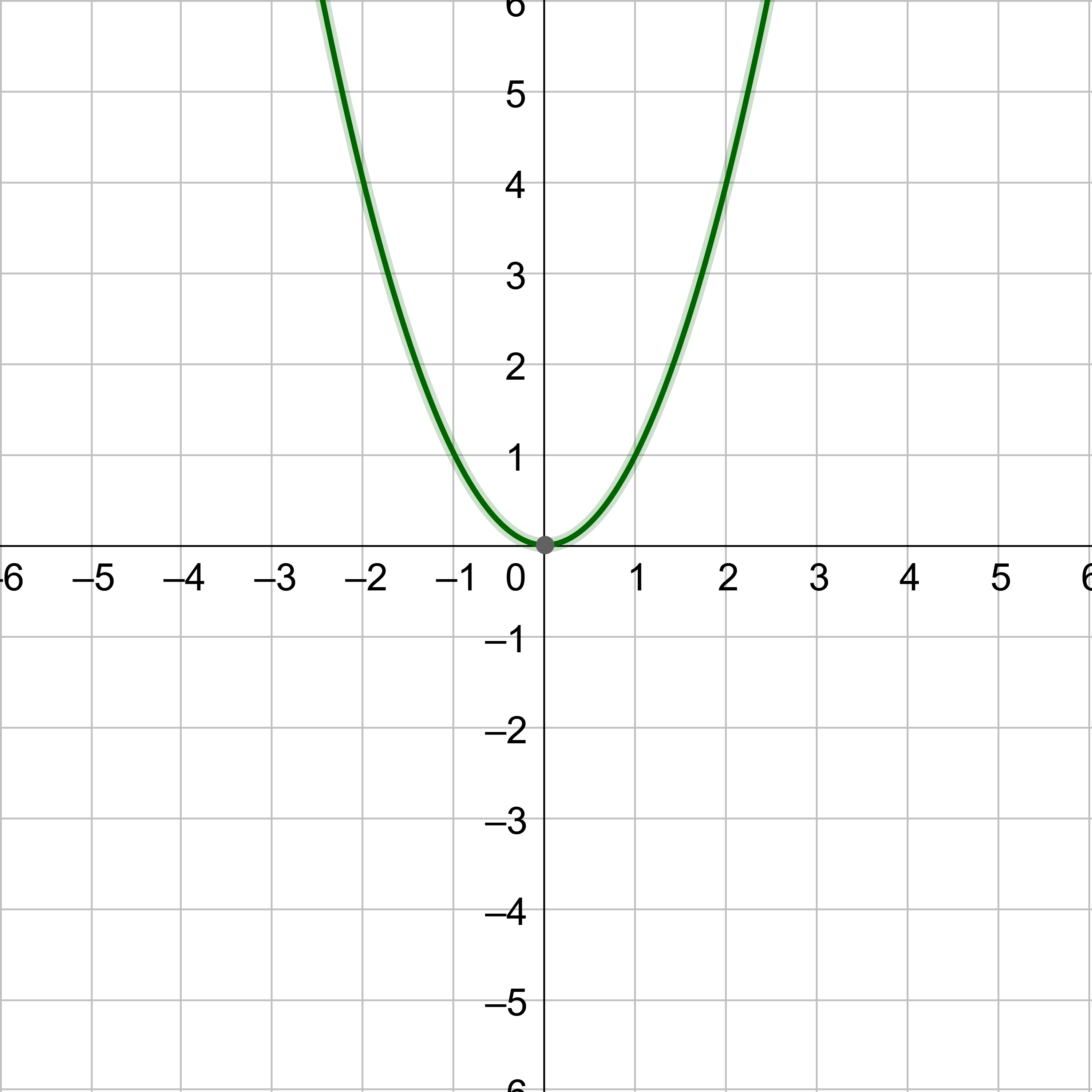Precalculus by Richard Wright
Precalculus by Richard Wright
He will swallow up death forever. The Sovereign Lord will wipe away the tears from all faces; he will remove his people’s disgrace from all the earth. The Lord has spoken. Isaiah 25:8 NIV
Summary: In this section, you will:
SDA NAD Content Standards (2018): PC.6.4

Some species of bamboo can grow very quickly. One type can grow 910 mm in a 24 hour period making it the fastest growing plant in the world. The bamboo growth rate is an average of 38 mm/hr. There are many situations that involve a rate of change with time. For example, cars on a highway can travel 60 miles per hour for several hours. These situations are examples of linear relationships.
A linear function is a function whose graph is a line. Linear functions can be written in the slope-intercept form of a line
y = mx + b
where m is the constant rate of change, or slope, and the y-intercept of the function is (0, b).
Often knowing the rate of change of something is important such as "What is the rate of change of the water height on the beach as the tide comes in?" or "What is the rate of change of the number of monarch butterflies?" Rate-of-change is how fast something is changing, and it is the slope of a linear function.
Given two points on a line, (x1, y1) and (x2, y2), the slope, m, is the rise/run.
$$ \text{slope} = \frac{\text{rise}}{\text{run}} $$
$$ m = \frac{y_2 - y_1}{x_2 - x_1} $$

Slope indicates the steepness of a line. The greater the absolute value of the slope, the steeper the line is.
The slope also shows whether the line is rising or falling from left to right.

The slope, or rate-of-change, between two points (x1, y1) and (x2, y2) is
$$ m = \frac{y_2 - y_1}{x_2 - x_1} $$
Parallel lines are two lines in the same plane that do not intersect so that they go in the same direction. Parallel lines have the same slope. Perpendicular lines are two lines that intersect to form a right angle. The slopes of perpendicular lines are negative reciprocals.
Two lines are parallel lines if they do not intersect. The slopes of the lines are the same.
y = m1x + b1 and y = m2x + b2 are parallel if m1 = m2.

Two lines are perpendicular lines if they intersect at right angles.
y = m1x + b1 and y = m2x + b2 are perpendicular if m1·m2 = −1, and so \(m_2 = -\frac{1}{m_1}\).

Find the slope of the line that passes through (1, −2) and (3, 6). Is this function rising or falling?
Solution
Substitute the points into the slope formula.
$$ m = \frac{y_2 - y_1}{x_2 - x_1} $$
$$ m = \frac{6 - (-2)}{3 - 1} $$
$$ m = \frac{8}{2} $$
m = 4
The function is rising because m > 0.
The order in which the points are used does not matter as long as the first y-coordinate used corresponds with the first x-coordinate used.
Find the slope of the line that passes through (−1, 0) and (7, −4). Is this line rising or falling?
Answer
\(m = -\frac{1}{2}\); falling
After learning the rate-of-change of a situation, sometimes it is important to have a mathematical model for the situation. A linear function through two points can be found using the Point-Slope form of a line. This formula is derived from the slope formula.
$$ m = \frac{y - y_1}{x - x_1} $$
Multiply both sides by x − x1.
m(x − x1) = y − y1
Use the symmetric property to change the order.
y − y1 = m(x − x1)
The point-slope form of a linear equation with slope m and passing through point (x1, y2) is
y − y1 = m(x − x1)
It is possible to write a linear function if just two pieces of information are known: the slope and a point the line passes through. Just take those and substitute those into the point-slope form of a line. Then solve for y to put it into slope-intercept form.
Or
Write the equation of a line that passes through the point (2, −1) and has a slope of 2. Write the answer in slope-intercept form.
Solution
The slope is 2, so m = 2. The point (x1, y1) is (2, −1). Substitute those into the point-slope form of a line.
y − y1 = m(x − x1)
y − (−1) = 2(x − 2)
Simplify.
y + 1 = 2x − 4
Solve for y.
y = 2x − 5
Write the equation of a line that passes through (−4, −1) and (4, 3). Write the answer in slope-intercept form.
Solution
The slope is not given this time, but it could be calculated from the points. Use the slope formula to find the slope.
$$ m = \frac{y_2 - y_1}{x_2 - x_1} $$
$$ m = \frac{3 - (-1)}{4 - (-4)} $$
$$ m = \frac{1}{2} $$
Now substitute the slope and one of the points, (4, 3), into the point-slope formula. It does not matter which point you use.
y − y1 = m(x − x1)
$$ y - 3 = \frac{1}{2}(x - 4) $$
Distribute.
$$ y - 3 = \frac{1}{2}x - 2 $$
Solve for y.
$$ y = \frac{1}{2}x + 1 $$
Write the slope-intercept form of an equation of a line that passes through the points (3, −11) and (−2, 4).
Answer
y = −3x − 2
Write the equation of the line in the graph.

Solution
First find the slope. Pick two points on the line such as points A(−1, 1) and B(2, −1). Then use the slope formula to find the slope. You could also just count the rise and run between the points from the graph.
$$ m = \frac{y_2 - y_1}{x_2 - x_1} $$
$$ m = \frac{-1 - 1}{2 - (-1)} $$
$$ m = -\frac{2}{3} $$
Now substitute the slope and one of the points, (2, −1), into the point-slope formula. It does not matter which point you use.
y − y1 = m(x − x1)
$$ y - (-1) = -\frac{2}{3}(x - 2) $$
Distribute.
$$ y + 1 = -\frac{2}{3}x + \frac{4}{3} $$
Solve for y.
$$ y = -\frac{2}{3}x + \frac{1}{3} $$
Find the equation of a line parallel to y = −2x + 4 that passes through the point (2, −3).
Solution
First find the slope. The question asks for a line parallel to the given line, and the slopes of parallel lines are the same. The slope of the given line is −2, so the slope of the desired line is also m = −2.
The point (x1, y1) is (2, −3). Substitute those into the point-slope form of a line.
y − y1 = m(x − x1)
y − (−3) = −2(x − 2)
Distribute.
y + 3 = −2x + 4
Solve for y.
y = −2x + 1
To illustrate that the lines are in fact parallel, figure 7 shows the graphs of both lines.

Find a line parallel to the graph of \(y = -\frac{1}{3}x + 2\) that passes through the point (−3, −3).
Answer
\(y = -\frac{1}{3}x - 4\)
Find the equation of a line perpendicular to y = −2x + 1 that passes through the point (2, −1).
Solution
First find the slope. The question asks for a line perpendicular to the given line, and the slopes of perpendicular lines are the negative reciprocals. The slope of the given line is −2, so the slope of the desired line is \(m = \frac{1}{2}\).
The point (x1, y1) is (2, −1). Substitute those into the point-slope form of a line.
y − y1 = m(x − x1)
$$ y - (-1) = \frac{1}{2}(x - 2) $$
Distribute.
$$ y + 1 = \frac{1}{2}x - 1 $$
$$ y = \frac{1}{2}x - 2 $$
To illustrate that the lines are in fact perpendicular, figure 8 shows the graphs of both lines.

Find the equation of a line perpendicular to y = x + 4 that passes through the point (2, 0).
Answer
y = −x + 2
Does the equation of a line provide a quick way to graph lines other than making a table? Slope-intercept form is convenient because it contains a point, the y-intercept. To graph the line, start by plotting the y-intercept. Then the slope, rise/run, indicates the direction of the line, so move up the rise and over to the right the distance of the run and plot another point. Repeat for a few more points. If the slope is negative, the motion is down and the right. Finally, draw the line through the points.
Graph y = −2x − 1 using the y-intercept and slope.
Solution
The equation is already solved for y and is in slope-intercept form. Compare it to y = mx + b. m = −2 and b = −1. Start by plotting the y-intercept, (0, b) = (0, −1).
Next follow the slope from that point to get a couple more points. The slope, m, is −2 or \(-\frac{2}{1}\). This is the rise/run, so the rise is −2 and the run is 1. From the y-intercept, move down 2 and right 1 to get a couple points. Or move the exact opposite, up 2 and left 1. Finally draw a line through the points.


Graph \(y = \frac{2}{3}x + 2\) using the y-intercept and slope.
Answer
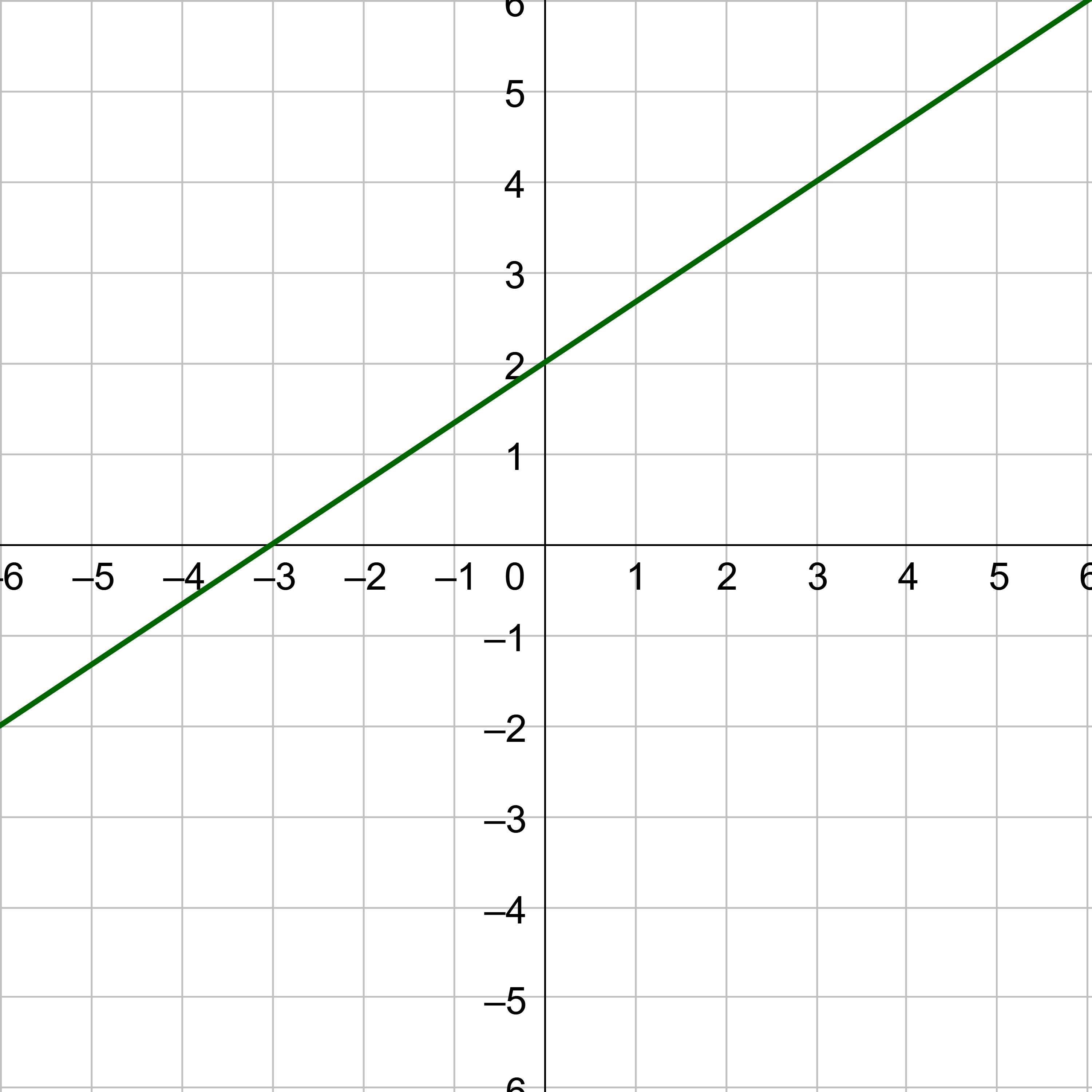
Two special lines have slightly different equations: horizontal and vertical lines. Horizontal lines have zero slope and a constant value. They have zero slope because there is no rise, so rise/run = 0/run = 0. The equation of a horizontal line is y = b where (0, b) is the y-intercept.

Vertical lines have no slope, sometimes called undefined slope, because they have zero run. The slope is rise/run = rise/0. Dividing by zero is undefined, so there is no slope. The x-value of the line is constant. The equation of a vertical line is x = a.

Horizontal line: y = b.
Vertical line: x = a.
Write the equation of the line graphed in the figure.

Solution
It is a vertical line, so it is in the form x = a. The constant x-value is −2, so the equation is x = −2.
Graph y = 1
Answer

Kayla currently can play 44 songs on the piano. Every month, she learns 2 new songs. Write a formula for the number of songs, N, that Kayla can play as a function of time, t, the number of months. How many songs will she be able to play in a year?
Solution
The y-intercept is the number of songs at time = 0 at the beginning of the problem. This is called the initial amount. At the beginning of the problem Kayla can play 44 songs, so the initial amount is 44 and the y-intercept is (0, 44). So, in the slope-intercept form of the equation, b = 44.
The number of songs Kayla can play increases by 2 songs per month. This is a rate-of-change which is a slope. So the slope m = 2.
Substitute both of these into the slope-intercept form of a line to get the equation.
y = mx + b
However, the variables are not x and y in this situation. The number of songs is N, so replace the y with N. The rate of change is in respect to time, so replace x with t.
N = mt + b
N = 2t + 44
To find out how many songs Kayla can play in a year, substitute the correct time into the equation. The time is in months according to the original question, so that means 12 should be substituted for t.
N = 2(12) + 44
N = 68
At the end of a year, Kayla can play 68 songs.
Bob wants to start a hobby of raising chickens. The coop, fencing, and birds are a one-time cost of $700. Additionally, he spends $25 per month on chicken feed. Write a linear function C for the cost of t months of raising chickens.
Solution
The one-time cost is $700 initially. This is the y-intercept. The rate of change of cost is $15 per month which is the slope. Substitute these into the slope-intercept form of a line to get the cost function.
y = mx + b
However, the variables are not x and y in this situation. The total cost is C, so replace the y with C. The rate of change is in respect to time, so replace x with t.
C = mt + b
C = 15t + 700
A satellite internet company requires you to pay $499 for the hardware for broadband internet. Then the monthly cost is $99. Write a linear function C where C is the cost for t months of service.
Answer
C = 99t + 499
The slope, or rate-of-change, between two points (x1, y1) and (x2, y2) is
$$ m = \frac{y_2 - y_1}{x_2 - x_1} $$
Two lines are parallel lines if they do not intersect. The slopes of the lines are the same.
y = m1x + b1 and y = m2x + b2 are parallel if m1 = m2.
Two lines are perpendicular lines if they intersect at right angles.
y = m1x + b1 and y = m2x + b2 are perpendicular if m1·m2 = −1, and so \(m_2 = -\frac{1}{m_1}\).
The point-slope form of a linear equation with slope m and passing through point (x1, y2) is
y − y1 = m(x − x1)
Or
Helpful videos about this lesson.


